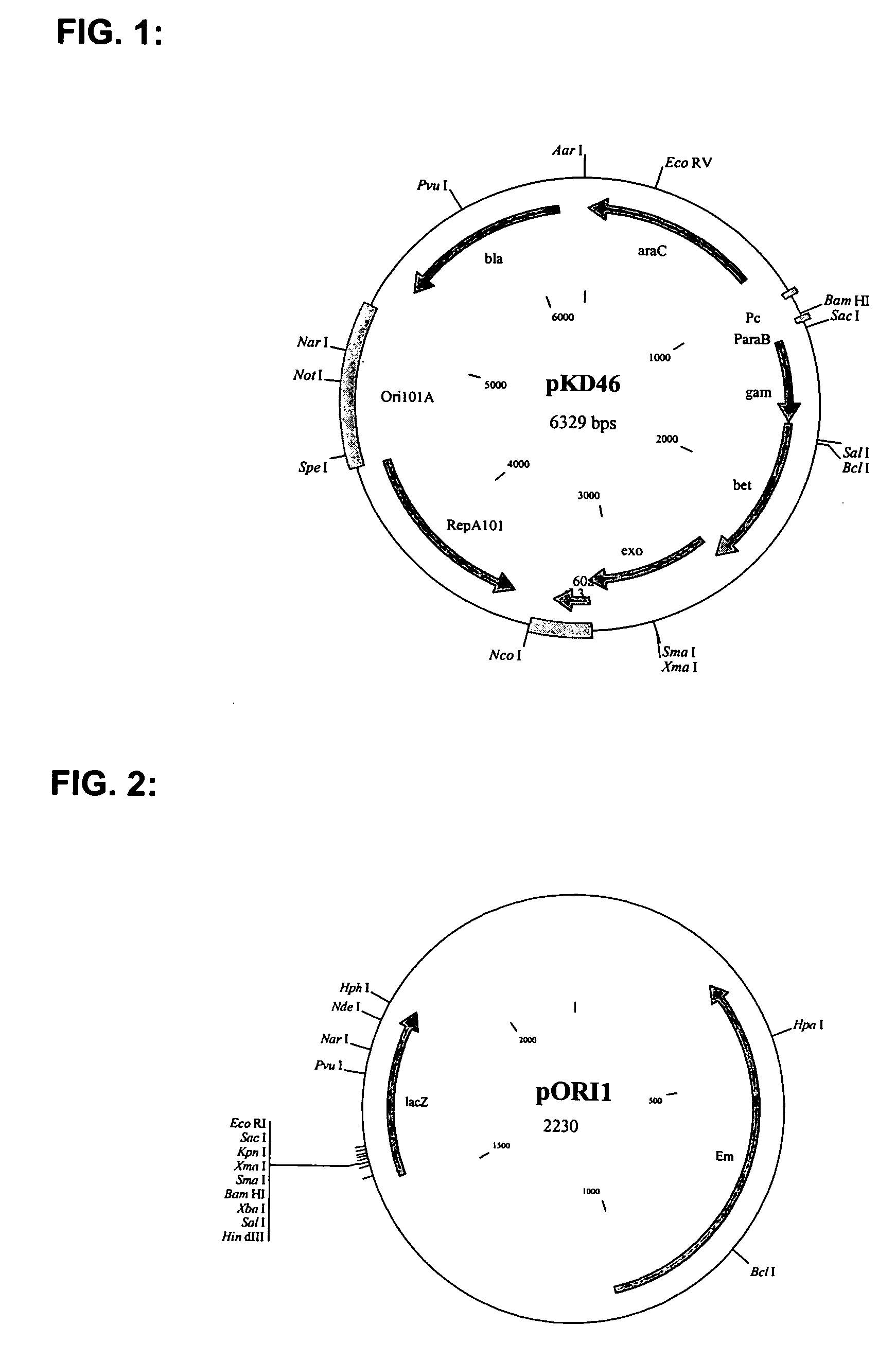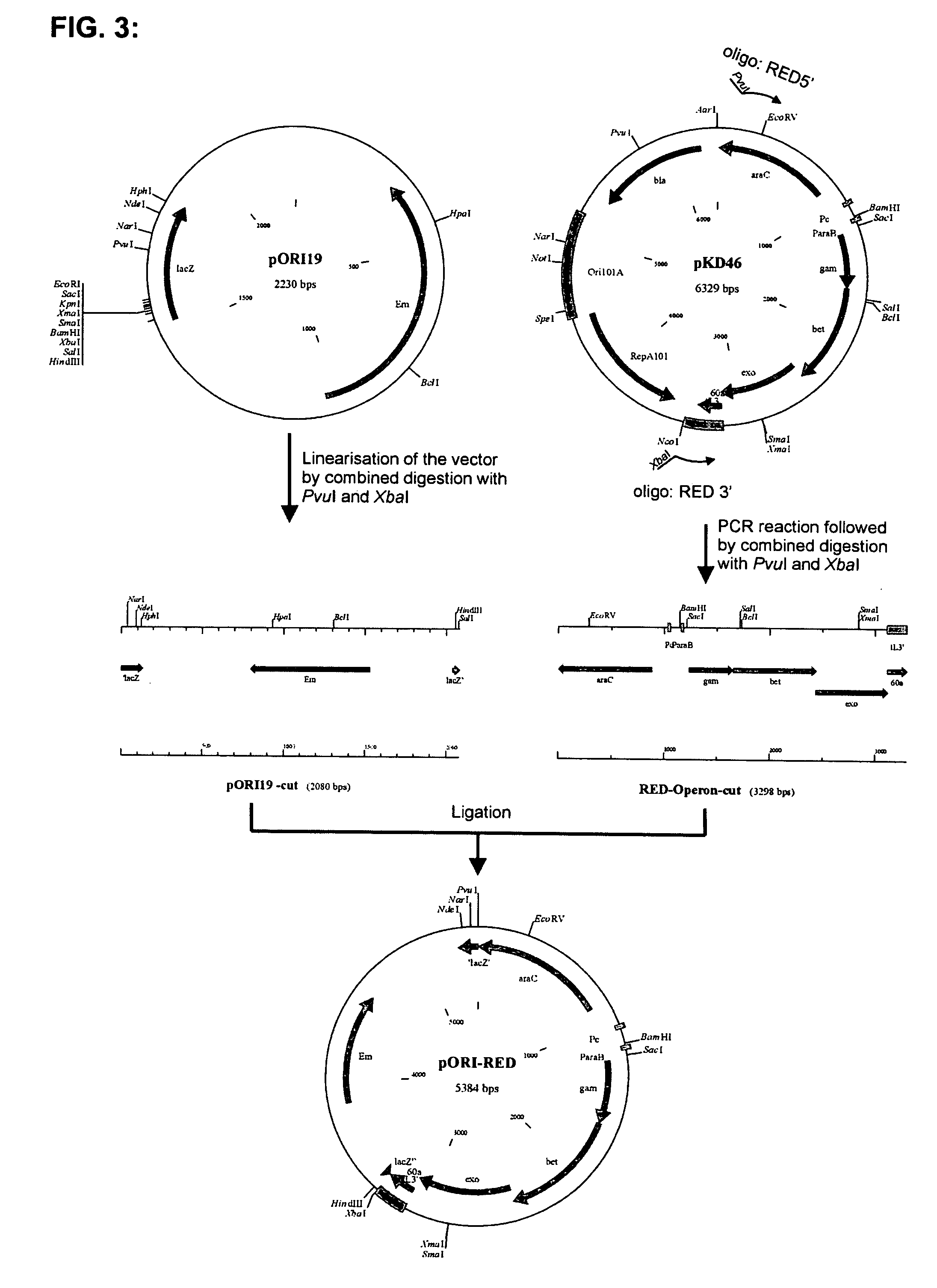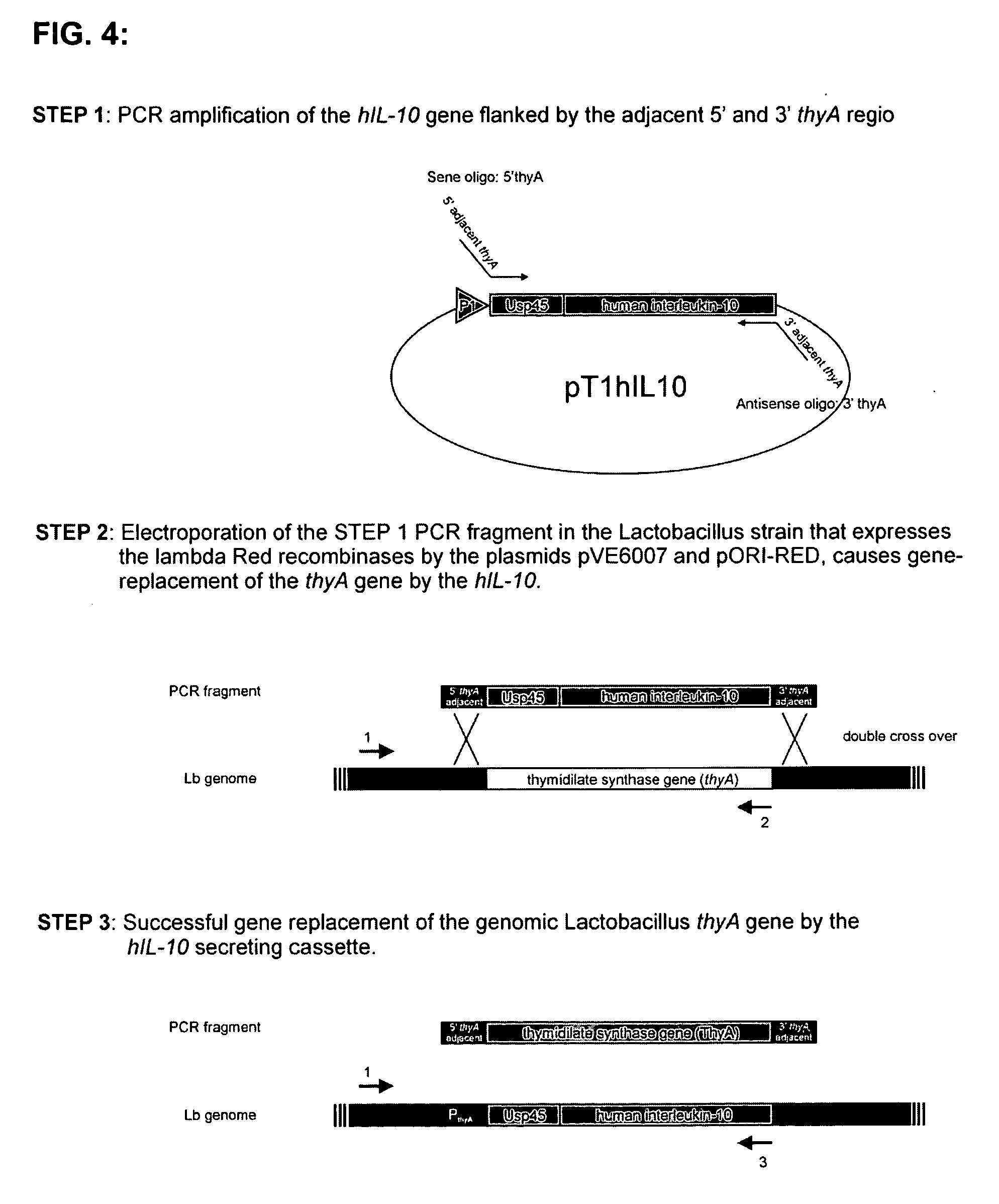Self-containing lactobacillus strain
a lactobacillus, self-contained technology, applied in the field of biotechnology, can solve the problem that the mutated strain is not stable enough to be used, and achieve the effect of improving the delivery to the intestin
- Summary
- Abstract
- Description
- Claims
- Application Information
AI Technical Summary
Benefits of technology
Problems solved by technology
Method used
Image
Examples
example 1
General Outline of the Experiment
[0025] On the base of the Lactobacillus casei or the Lactobacillus plantarum sequence, the Thy A gene is localized in L. salivarius, or any other suitable Lactobacillus species. Starting from this sequence, the sequences adjacent to the Thy A gene are cloned and sequenced.
[0026] The knowledge of these sequences is of critical importance for the genetic engineering of any Lactobacillus strain in a way as described below, as the strategy will employ double homologous recombination in the areas 1000 bp at the 5′ end and 1000 bp at the 3′ end of thyA, the “thyA target.” These sequences are not available from any public source to date. We have cloned these flanking DNA fragments and have identified their sequence.
[0027] The thyA replacement is performed by homologous recombination, essentially as described by Biwas et al. (1993). Suitable replacements in a plasmid-borne version of the thyA target are made, as described below. The carrier plasmid is a r...
example 2
Identification of the Thymidylate Synthase (thyA) Regio in Lactobacillus Species
[0035] Based on the publication of Kleerebezem et al., 2003, we had web-based access to the complete genome sequence of Lactobacillus plantarum WCFS1. Based on a blastn between the complete genome of the Lactobacillus plantarum WCFS1 and the thyA gene of E. coli K12, we identified the thyA gene in Lactobacillus.
[0036] Based on these published thyA DNA sequences of L. plantarum, WCFS1 degenerate oligonucleotides are synthesized to be used as primers for DNA sequencing of the thyA gene of any particular Lactobacillus species. Once the sequence of the thyA gene of that particular Lactobacillus species is known, oligonucleotides are designed as primers for DNA sequencing of the 5′ and 3′ flanking regions of the thyA gene. The identification of the 5′ and 3′ flanking regions (a stretch of 50 nucleotides upstream and downstream of the thyA gene is sufficient) is necessary for the gene replacement of the thyA...
example 3
Gene-Replacement of the thyA Gene by the hIL-10 Gene
[0037] The system of gene-replacement that is used in Lactobacillus is an adaptation of a system introduced by Datsenko et al. (2000). This is a simple and highly efficient method to disrupt chromosomal genes in Escherichia coli. In this procedure, PCR primers provide the homology to the targeted gene(s) and recombination depends on the phage λ Red recombinases, which are synthesized under the control of an arabinose-inducible promoter on an easily curable, low copy number plasmid, plasmid pKD46 (FIG. 1). This recombination pathway not only ensures that, after electroporation of the linear PCR fragment into the cell, the linear DNA is not instantly degraded, but it also allows an efficient gene replacement by a double cross-over with a limited homology of only 36 to 50 nucleotides to the regions adjacent to the gene that need to be replaced.
[0038] The pKD46 plasmid is an E. coli plasmid. To adapt this method to Lactobacillus, it ...
PUM
| Property | Measurement | Unit |
|---|---|---|
| temperature | aaaaa | aaaaa |
| temperature | aaaaa | aaaaa |
| temperature sensitivity | aaaaa | aaaaa |
Abstract
Description
Claims
Application Information
 Login to View More
Login to View More - R&D
- Intellectual Property
- Life Sciences
- Materials
- Tech Scout
- Unparalleled Data Quality
- Higher Quality Content
- 60% Fewer Hallucinations
Browse by: Latest US Patents, China's latest patents, Technical Efficacy Thesaurus, Application Domain, Technology Topic, Popular Technical Reports.
© 2025 PatSnap. All rights reserved.Legal|Privacy policy|Modern Slavery Act Transparency Statement|Sitemap|About US| Contact US: help@patsnap.com



